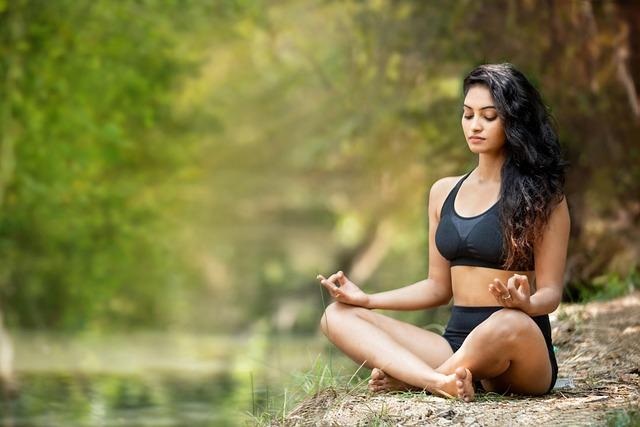In a world where childhood obesity rates are rising and screen time often trumps outdoor play, the quest for effective physical education has never been more crucial. As schools grapple with finding the best ways to keep children active, an ancient practice is stepping onto the stage, offering a serene yet powerful alternative. Yoga, with its roots deep in history, promises not just flexibility and strength, but also mindfulness and balance. But can this age-old practice truly replace the structured physical education programs designed to get kids’ hearts racing and muscles moving? This article delves into the intriguing possibility of yoga as a comprehensive physical education substitute, examining its potential benefits, limitations, and the role it could play in shaping the future of childhood fitness.
Exploring the Benefits of Yoga in Childhood Development
In the quest for holistic childhood development, many parents and educators are considering the incorporation of yoga into children’s routines. While structured physical education classes offer cardiovascular and muscle-strengthening exercises, yoga provides a unique blend of physical and mental benefits that can complement traditional PE classes. It nurtures flexibility, balance, and coordination, which are essential for growing bodies. Additionally, yoga’s focus on mindfulness and breathing techniques can aid in reducing stress and anxiety, fostering a calmer, more focused learning environment.
Consider the following benefits of integrating yoga into children’s daily activities:
- Improved Concentration: Through the practice of mindful breathing and focused poses, children can enhance their concentration and memory.
- Emotional Balance: Regular yoga practice can help children manage their emotions better, promoting resilience and empathy.
- Inclusivity: Yoga is adaptable and accessible to children of all abilities, making it an inclusive form of exercise.
- Self-discipline and Responsibility: As children learn and master various poses, they develop a sense of achievement and self-discipline.
While yoga should not completely replace structured physical education, its integration can provide a well-rounded approach to children’s physical and emotional well-being.
Comparing Yoga and Traditional Physical Education Approaches
When examining the distinctive characteristics of yoga versus traditional physical education (PE), several differences and similarities emerge. Yoga is often centered around individual progress, mindfulness, and flexibility, emphasizing a holistic approach to physical and mental well-being. In contrast, traditional PE focuses on structured physical activities, teamwork, and skill development, often prioritizing cardiovascular health and competitive sports.
- Focus and Goals: Yoga aims to integrate the mind and body through poses and breath control, while traditional PE aims to enhance physical fitness through various sports and exercises.
- Approach to Learning: Yoga encourages introspection and personal growth, whereas traditional PE often involves group activities that foster social skills and teamwork.
- Physical Benefits: Yoga can improve flexibility and reduce stress, while traditional PE enhances endurance, strength, and coordination.
Incorporating elements from both disciplines could provide a balanced approach to children’s physical education, blending the mindfulness of yoga with the dynamic activities found in traditional PE. By doing so, children might enjoy a comprehensive program that nurtures both their physical and mental health.

Understanding the Role of Physical Activity in Child Growth
Physical activity is a cornerstone of healthy development in children, playing a crucial role in their physical, mental, and emotional growth. While structured physical education classes are designed to promote cardiovascular fitness, muscle strength, and coordination, yoga offers a complementary approach that focuses on flexibility, balance, and mindfulness. Integrating yoga into a child’s routine can enhance their ability to concentrate, manage stress, and cultivate a sense of inner calm. However, it is essential to consider how yoga might fit within or alongside traditional physical education to provide a well-rounded fitness experience.
- Flexibility and Balance: Yoga can help improve flexibility and balance, crucial for overall physical health.
- Mindfulness and Concentration: Practicing yoga encourages mindfulness, which can enhance concentration and emotional regulation.
- Stress Management: Yoga offers techniques for stress management that can benefit children in school and social settings.
Ultimately, while yoga presents numerous benefits, it may not entirely replace the need for more dynamic physical activities that contribute to cardiovascular health and social skills through team sports. Instead, a balanced approach that incorporates both yoga and structured physical education can cater to the diverse needs of growing children, fostering a holistic development that prepares them for a healthy future.

Recommendations for Integrating Yoga into School Curriculums
To seamlessly weave yoga into the fabric of school curriculums, educators should consider the following strategies:
- Flexible Scheduling: Incorporate short yoga sessions throughout the day, allowing students to refresh their minds and bodies without disrupting the academic schedule.
- Teacher Training: Provide educators with professional development opportunities to understand the fundamentals of yoga and its benefits, enabling them to effectively guide students.
- Inclusive Practices: Design yoga sessions that cater to diverse abilities, ensuring every student can participate and benefit, thus promoting a sense of belonging and inclusivity.
- Integration with Other Subjects: Use yoga to complement other areas of learning, such as science (understanding anatomy) or social studies (exploring cultural histories of yoga), making it a holistic educational tool.
By adopting these recommendations, schools can create an environment where yoga not only complements but enhances the traditional physical education framework, offering a balanced approach to student well-being.

